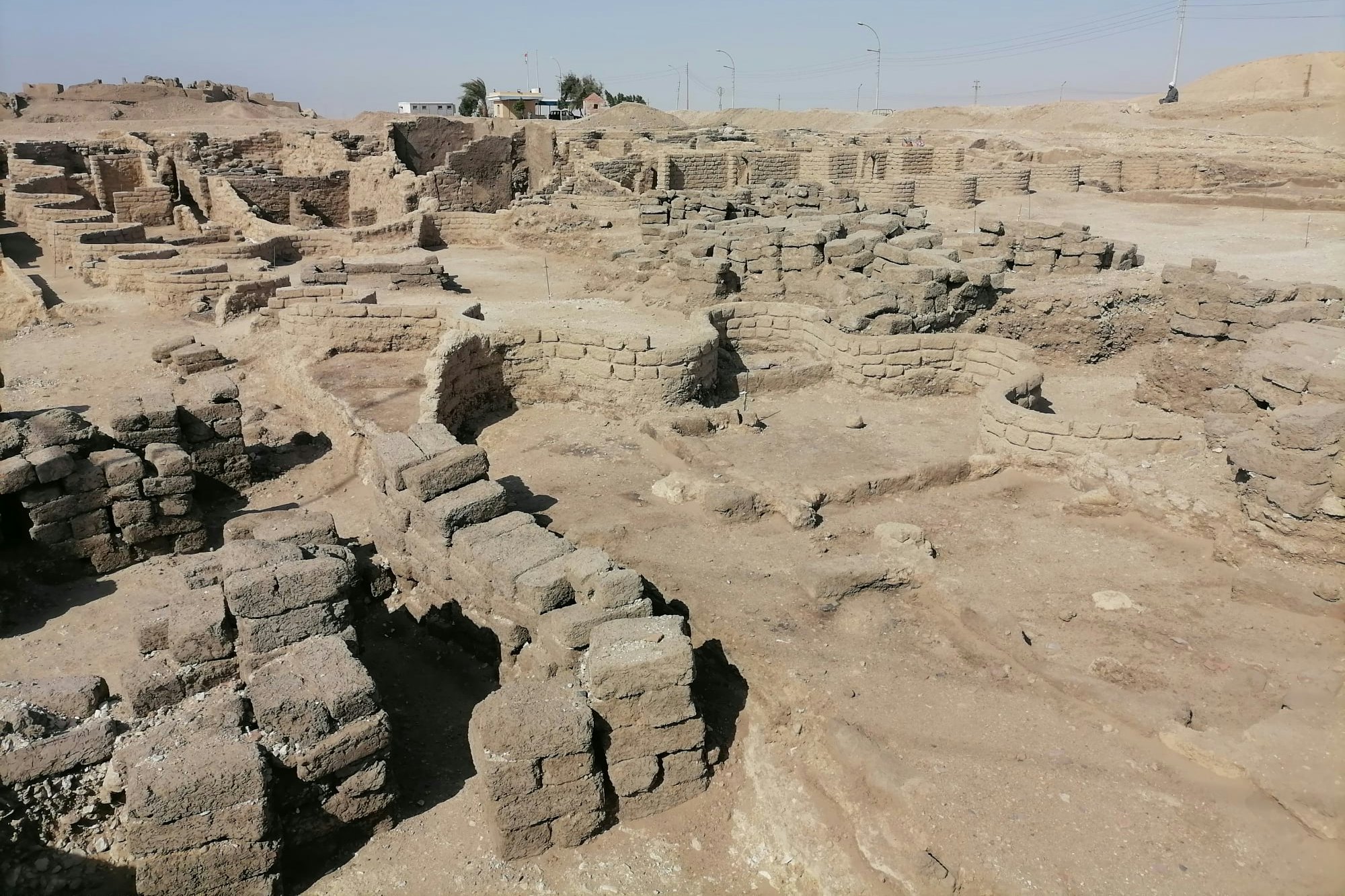Archaeologists uncover Ancient Egyptian 'lost city' in Luxor
Apr 13, 2021 • 2 min read

The city at the 'Palace of the Dazzling Aten' was uncovered near Luxor © Ancient Egyptian Heritage and Archaeology Fund
An ancient pharaonic city built around 3500 years ago has been discovered near Luxor in Egypt. It has been revealed to be part of a palace built for the jubilee of the pharoah Amenhotep III at Malqata, who ruled between 1386 and 1353 BCE, approximately.
The city at the 'Palace of the Dazzling Aten' was uncovered in September 2020 near the Colossi of Memnon, the two massive stone statues of the pharoah, who was Egypt’s greatest builder. It is also located near to the Temple of Ramesses III at Medinet Habu, and the Ramesseum, the mortuary temple of Pharaoh Ramesses II. Along with the palace, the area housed other palaces, administrative buildings, a temple dedicated to the god Amun and a desert altar known as the the Kom al-Samak.

There was also a huge ceremonial lake known as the Birket Habu, and a vast settlement of houses and workshops to provision the palace, stretching along the Nile for a distance of over seven kilometers. Almost all of this was built from unbaked mud bricks that have now decayed. According to Peter Lacovara, director of Ancient Egyptian Heritage and Archaeology Fund, the new discovery is like an ancient Egyptian Pompeii, where you can walk down the streets of a village from 3500 years ago. "What is remarkable about the latest discovery is its amazing degree of preservation," he tells Lonely Planet.

"Some of the houses that were found were preserved up to a height of three meters and with much of the contents still intact, including tools, kitchens and pottery vessels - many with the beautiful blue painted decoration known as ‘palace ware.’ Inscriptions on some of the pots name the settlement as ‘the Rise of Aten’ and date them to Amenhotep III’s jubilee. Another inscription discovered records the name of the ‘the domain of the dazzling Aten,’ the name of a temple built at Karnak by Amenhotep’s son, Akhenaton, the “heretic pharaoh” who with his wife Nefertiti, ruled after Amenhotep III.
Peter says that this discovery demonstrates how rich the archaeology of this area was, and its need to be preserved and protected as a national park for Egypt. Further information on the Ancient Egyptian Heritage and Archaeology Fund can be found here.
You might also like:
Egypt plans to build a high-speed train from the Red Sea to the Mediterranean
Archaeologists have discovered a treasure trove of ancient Egyptian coffins
Check out these incredible images from a colourfully-decorated 4500-year-old tomb in Egypt
Plan with a local




